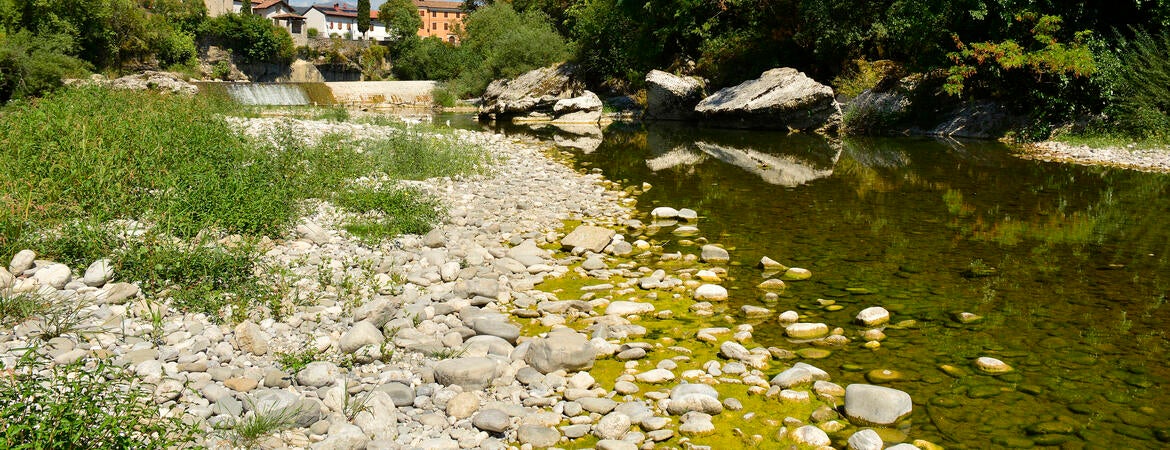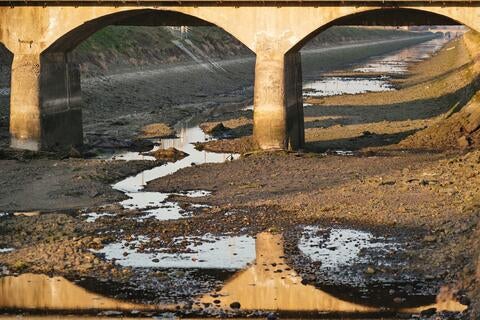
Lack of rainfall is not the only measure of drought. New UC Riverside research shows that despite a series of storms, the impact of drought can persist in streams and rivers for up to 3.5 years.
There are two measures of drought in streams. One measure is the total water level, which is impacted by snowmelt and rainfall. Many researchers examine this measurement. Another measure is baseflow, which is the portion of streamflow fed by groundwater.
Fewer researchers examine baseflow droughts, and there was not previously an accurate way to measure them. Because baseflow is strongly tied to groundwater, and because the lack of it has significant impacts on water management and ecosystem services, the UCR team decided to examine baseflow more closely.
“People often just use rain as an indicator of drought because it’s easier to measure. But there are other kinds of drought that each have their own impacts,” said Hoori Ajami, study corresponding author and associate professor of groundwater hydrology at UCR. “We needed a new way to see how long it takes for one form of drought to become another form.”

Baseflow belongs to a category of drought affecting streams and rivers, called hydrological drought. It affects the availability of water for activities like drinking, irrigation, and bathing, and impacts wildlife, plant, and overall ecosystem health. In addition, severe hydrological drought could affect the stability of infrastructure.
To develop a more nuanced and location-specific method for defining the beginnings and endings of hydrological droughts, the research team examined 30 years of data from more than 350 locations around the country.
For this study, the team only examined the baseflow of streams or rivers that were not impacted by human activity, and do not feature any reservoirs or dams.
Their results, reported in the Journal of Hydrology, show the beginning and end of a hydrological drought depends on a variety of factors. These include the typical climate in a location as well as its geography.
There were a wide range of lag times between the end of a rainfall drought and the end of baseflow drought. In parts of Kansas, it took 41 months for streams to recover, while in the Arroyo Seco area near Pasadena in California, recovery took almost one year.

“When we are looking at water management strategies, it is clear we cannot implement a one-size-fits-all solution everywhere, for every stream. Our approaches need to be site specific,” said study lead author Sanghyun Lee. Formerly a postdoctoral scholar in Ajami’s laboratory, Lee is now a postdoctoral fellow with the USDA’s Agricultural Research Service in Oklahoma.
“When I first came to California in 2016, people asked me, ‘Is the drought over?’ They wanted to know if our watersheds had recovered. This new study shows it may take another few years until they get back to normal,” Ajami said.
These results are consistent with previous studies showing that the water in underground aquifers is also delayed in its response to a lack of rainfall. These aquifers supply the baseflow of rivers and are a key source of water for agriculture. However, excessive groundwater pumping during drought could cause the formation of sinkholes, causing buildings and other infrastructure to shift or collapse.
“One key message we want to send is that people must be careful about managing the water they have,” Lee said. “Because of rising temperatures, baseflow drought is getting longer and more severe in many parts of the country. And because watershed boundaries often cross state or international lines, preserving precious water resources will require more cooperation.”
